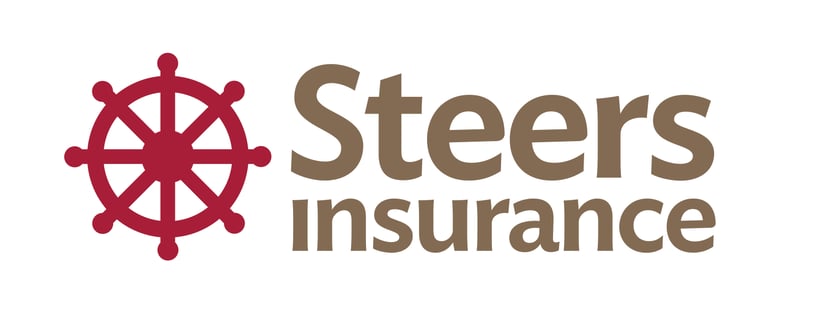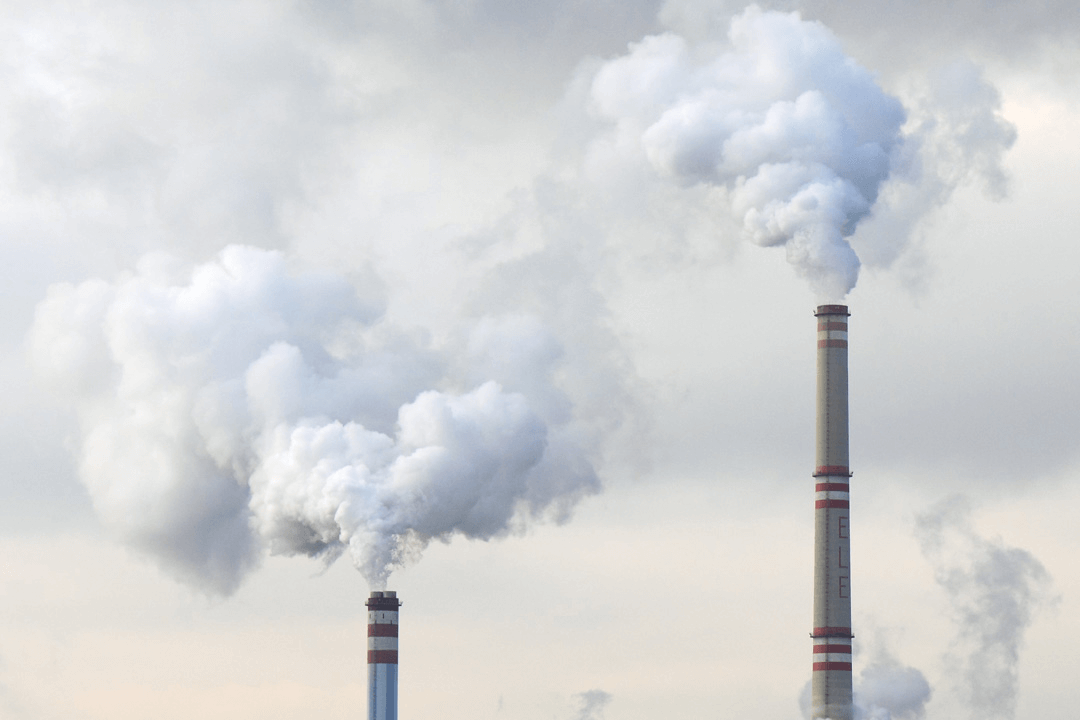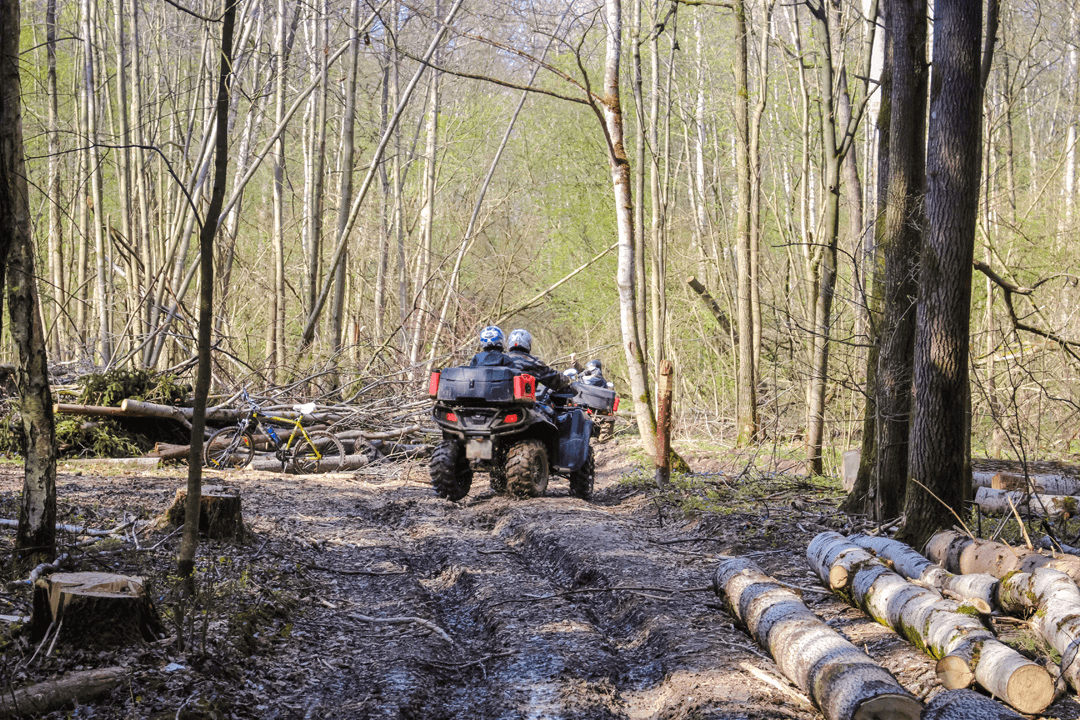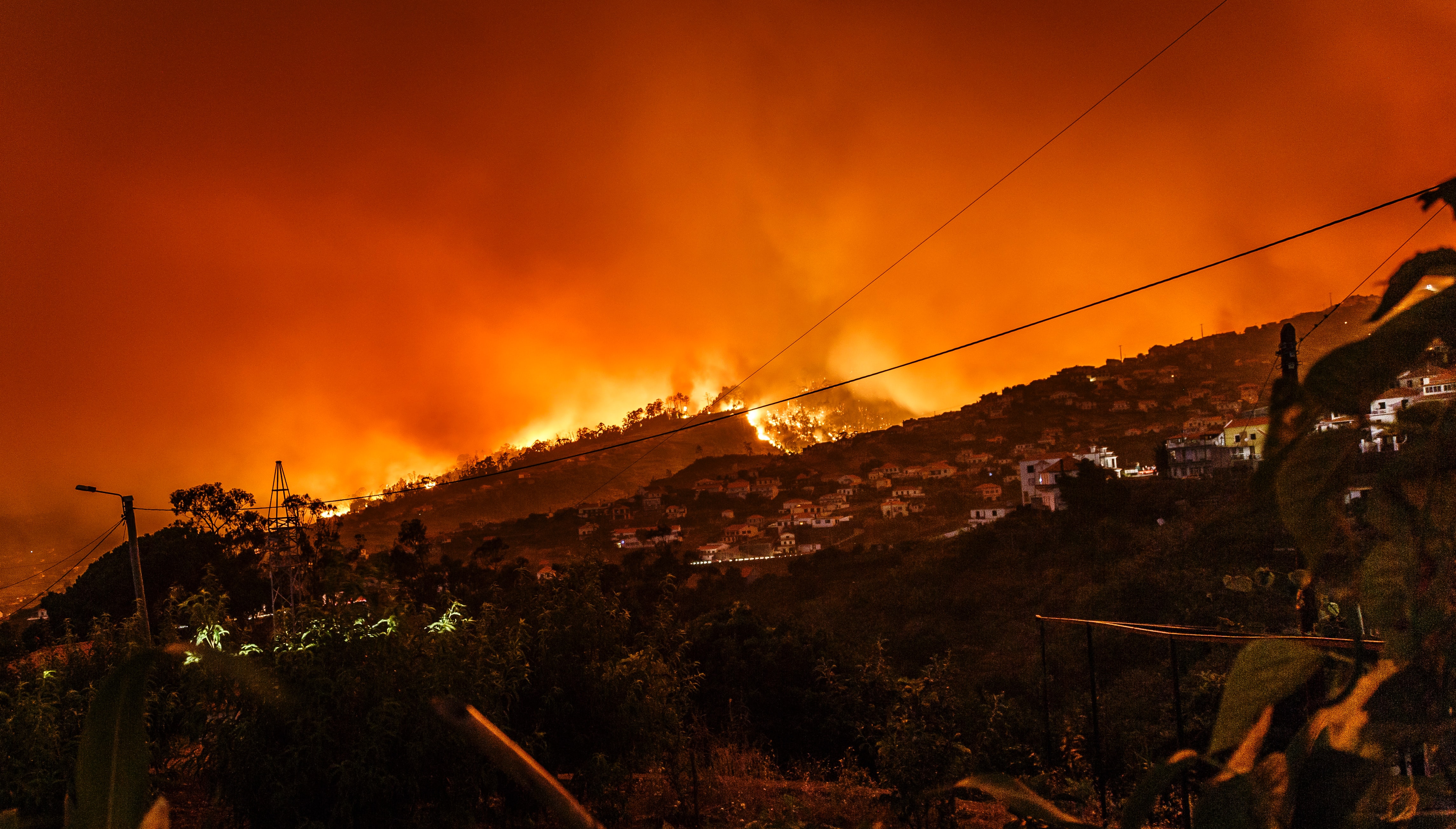Wildfires destroy thousands of acres of land and hundreds of buildings annually. Damages sustained at your home can include fire damage as well as smoke and water damage. Your family could be forced to relocate for several months while your home is rebuilt, and your cherished possessions could be destroyed. As urban areas extend farther into forested lands each year, the amount of damage is likely to increase annually. Despite a trend of increasing wildfire risk, there are steps that can be taken to protect property and mitigate damage. Building design, property access, and creation of a fuel reduction zone, can make a significant difference in whether your home survives a wildfire.
Building & Landscape Design & Maintenance
- The roof is the most susceptible part of your home when it comes to wildfires. Sparks and embers are capable of traveling long distances and igniting flammable materials. NOTE: Ensure that roof coverings are made of Class-A fire resistant material such as asphalt shingles, metal, or clay or concrete tile.
- Some types of exterior siding can melt when exposed to high temperatures, allowing the fire to reach the inner framing and ignite. Vinyl siding is vulnerable to melting, and wood siding is combustible. NOTE: Masonry veneer, poured concrete, stucco, and fibre cement boards offer superior fire resistance.
- Vents and openings on the exterior of your home are a common place for combustible debris to accumulate, which could be ignited by embers during a wildfire. NOTE: All vents should be made of non-combustible material such as metal and be ASTM fire rated.
- Gutters can accumulate combustible materials such as pine needles, and open eaves allow for sparks and embers to enter. NOTE: Ensure that your gutters are cleaned and eaves inspected on a regular basis to ensure that there is no debris build-up or any compromised areas.
- Landscape design can factor greatly into the susceptibility of your home. NOTE: Design a 1.5 meter non-combustible surface perimeter around the building footprint. This area
should also be kept clear of combustible materials such as decking or patio furniture. - Landscaping within 10 meters of your home should include a low density of fire-resistant plants and shrubs. NOTE: Avoid tall grasses, cedar, juniper, pine, spruce, mulch, and woody debris. Keeping the lawn mowed shorter than 10 cm can help to maintain a fire-resistant zone.
- NOTE: Avoid stacking firewood against your house, as it creates a severe fire hazard. Relocate your supply to at least 10 meters away from your home, being mindful not to store it against outbuildings.
- NOTE: Install a spark arrestor for the chimney of your woodburning fireplace to reduce the chance of sparks or embers escaping and starting a fire.
Emergency Planning & Preparation
In the event of a fire at your property, advanced planning for emergency access and staging can be the difference between saving or losing your home. In advance of fire season, consider the following:
- Is your property easily identifiable to the fire department? Ensure that your address marker is clearly displayed, easily visible, and kept clear of any debris or plant growth.
- Is your property easily accessible to the fire department? Is your driveway wide enough to accommodate emergency vehicles? Are any bridges, corners, or hill gradients engineered appropriately to allow for a firetruck to safely navigate the terrain?
- Is your driveway equipped with automated or manual gates? If so, an emergency access protocol should be established. This can involve the installation of a siren operated-opening system, furnishing the fire department with a key or gate code, or authorizing your alarm monitoring company to automatically open the gates in the event of a fire alarm. Your access protocol should be discussed with the local fire prevention authorities to ensure suitability.
- Consider requesting a scheduled visit from your local fire department before wildfire season begins. They can assess the unique characteristics of your home and property and suggest measures to improve your home’s profile and overall vulnerability.
STAY UP TO DATE ON YOUR LOCAL FIRE DANGER WARNING LEVEL AND RESTRICTED FIRE ZONES
Local fire danger warning levels are generally determined using the Fire Weather Index (FWI) to assess the risk of an open air fire. During wildfire season, your local fire department will likely assess and post the warning level on a daily basis. Before conducting any open air burning (such as fire pits/campfires), check the local status and burn permit requirements. When tolerated by local authorities, any open air burning should be conducted at least 10 meters away from your house, outside structures, and combustible materials, including fences,
decks, docks, trees, and landscaping.


 ;
;
 ;
;
 ;
;
 ;
;
 ;
;
 ;
;
 ;
;



